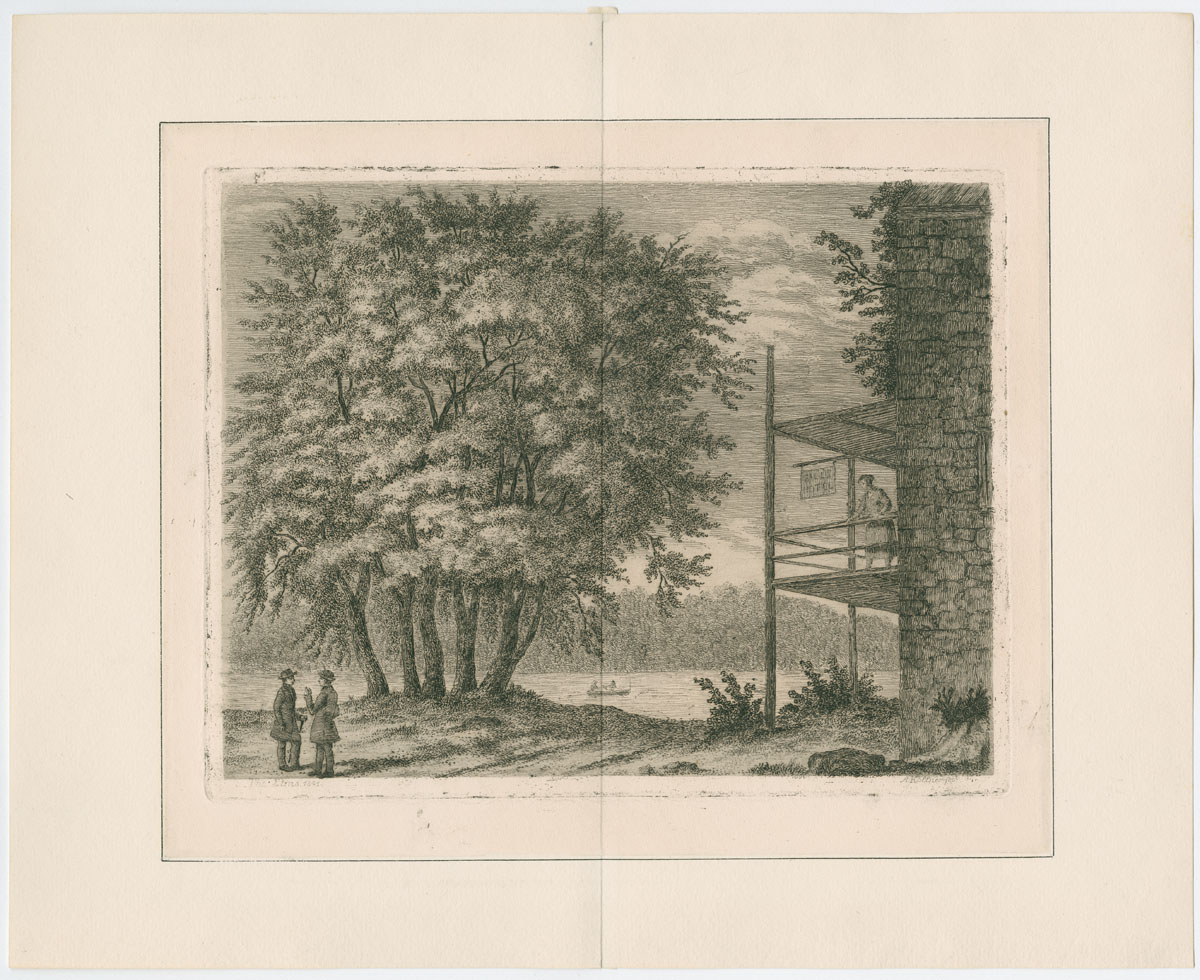The Elms, an
etching by Augustus Kollner, initially seemed like it would be a relatively
straightforward work to catalog. The
artist’s name, title and date, 1844, were all printed beneath the image.
However,
in a cataloger’s world of art historical mysteries, things are not always as
they seem. Woven among blades of grass
on the lower border of the print and barely visible to the naked eye is another
date: 1896.
So which date is
correct? For the answer we must look
back into Kollner’s biography.
Augustus Kollner moved to Philadelphia in 1840 and spent his
first few years traveling throughout the East Coast making sketches of the
scenery. He also created watercolors and
drawings during his explorations of the Philadelphia area. It seems likely that Kollner sketched the
idyllic riverside scene depicted in The
Elms during this time; an assumption confirmed by the 1844 date. However, later in life Kollner made oil
paintings, watercolors, and prints of his earlier sketches. In addition to labeling these later works
with the date they were created, Kollner would also include the date of the
original drawing. This leads to the very
confusing situation of two works of art made by the same person, of the same
scene, but inscribed with two conflicting dates.
A little more digging reveals another clue to this
mystery. In the collection of the Free
Library of Philadelphia, there is a watercolor drawing by Kollner called The Elm Tree Opposite Laurel Hill. It depicts the same scene as the etching at
the Library Company: a grouping of tall trees on a riverbank with a stone
building on the right. This drawing is
also dated 1844. Given Kollner’s unusual
system for dating his works, it is safe to say that the Free Library’s
watercolor was created in 1844 and the Library Company’s print was made in
1896, when Kollner revisited his previous work.
In fact, Kollner did not just copy his previous drawing into
another medium; he made a few key changes when he revisited the work over 50
years later. He populated his etching
with a boat on the river, two men conversing in front of the trees and woman
standing on the wooden balcony of the stone building. He also identified the building as the Falls
Hotel by labeling the sign on the building (which is present in the drawing,
but left blank). With these changes,
Kollner situates the scene in a more specific location - the neighborhood of
East Falls, across the Schuylkill River from West Laurel Hill Cemetery.
With a magnifying glass and a bit of research this art
historical mystery is solved.
Alison Van Denend
IFPDA Foundation Curatorial Intern, Summer 2014
See Nicholas B. Wainwright, “Augustus Kollner, Artist” in Pennsylvania Magazine of History and
Biography. LXXXIV. Philadelphia:
Historical Society of Pennsylvania, 1960. 325-351.




Great art. Thanks a lot...
ReplyDelete